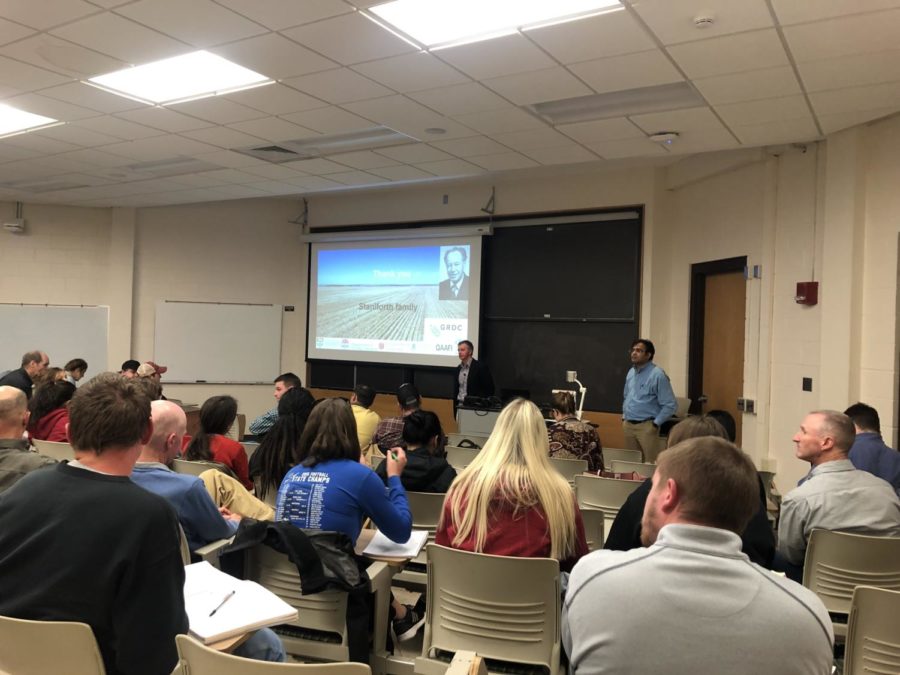Australian researcher presents weed seed control advances
Molly Milder/ Iowa State Daily
Audience members listened to weed seed researcher Michael Walsh present on the advancements in harvest weed seed control at his lecture Tuesday in Horticulture Hall.
October 22, 2019
Michael Walsh, director of weed research at the University of Sydney, Australia, spoke about weed seed control and the advancement of machinery at his lecture Tuesday. Walsh was introduced by Prashant Jha, associate agronomy professor, at 4:10 p.m. in Horticulture Hall.
“From working with growers and seeing what they were doing, I became interested and enthusiastic to see just how enthusiastic growers were — it was contagious,” Walsh said.
Walsh said he began working with growers in Western Australia to target weed seeds during harvest by developing harvest weed seed control systems. The systems include chaff cart, narrow windrow burning, bale direct, chaff lining, chaff tramlining and impact mills.
“Targeting weed seeds at harvest is all about stopping inputs into the seed banks,” Walsh said. “Any weeds are relying on a seed bank to be a problem in subsequent crops, so if you can stop the seeds from going to the seed bank, we can decline the seed bank, and therefore your weed problem has declined.”
After system trials, Walsh said many growers were not trusting of these new systems coming from researchers. Walsh set up 30 workshops in 2010 through 2015 where growers presented research findings and communicated with other growers. Walsh said during 2014, 43 percent of Australian growers were using harvest weed seed control systems.
Madeline Frischmeyer, sophomore in agronomy, attended the lecture and asked Walsh about the impact harvest weed seed control systems will have on chemical companies in Australia since herbicide usage is decreasing.
“I thought there would be a lot more resistance from chemical companies,” Frischmeyer said. “So, hearing [Walsh’s] opinions on how they are actually going to or should adopt and kind of move into weed management companies, instead of chemical management companies — I thought that was really interesting.”
Based on his research, Walsh said 80 percent of growers in Australia are expected to be using a harvest weed seed control system by the year 2020. Walsh spoke about what will be needed to continue the improvement of harvest weed seed control.
Walsh said his two main improvement goals are to develop site specific weed control technologies and to directly treat the weeds.
As an agronomy major, Frischmeyer said she attended the lecture to get more information on what the next steps are for harvest weed seed control.
“I just think weed management in general is up and coming and it’s what I’m going to go into eventually,” Frischmeyer said. “I thought this would be a good opportunity to learn a little bit more.”
Walsh also offered advice to the audience for students who are interested in working with harvest weed seed control.
“Get to know growers who are innovators and are willing to have a go at these things,” Walsh said. “For some students, it’s going to be tough because there is very little knowledge about weed seed control here in the [United] States, particularly amongst growers. They need to work with the growers to get the systems in place.”
There are several reasons why people may care about harvest weed seed control and the chemical herbicides used on crops.
“If you like to eat, we need to make sure we are producing crops in an effective manner,” Frischmeyer said. “Also, I believe this new way of controlling weeds is important because people are always concerned about the environment and water quality. We adapt these new tactics, we are using less chemicals so we are being more environmentally stable.”

















